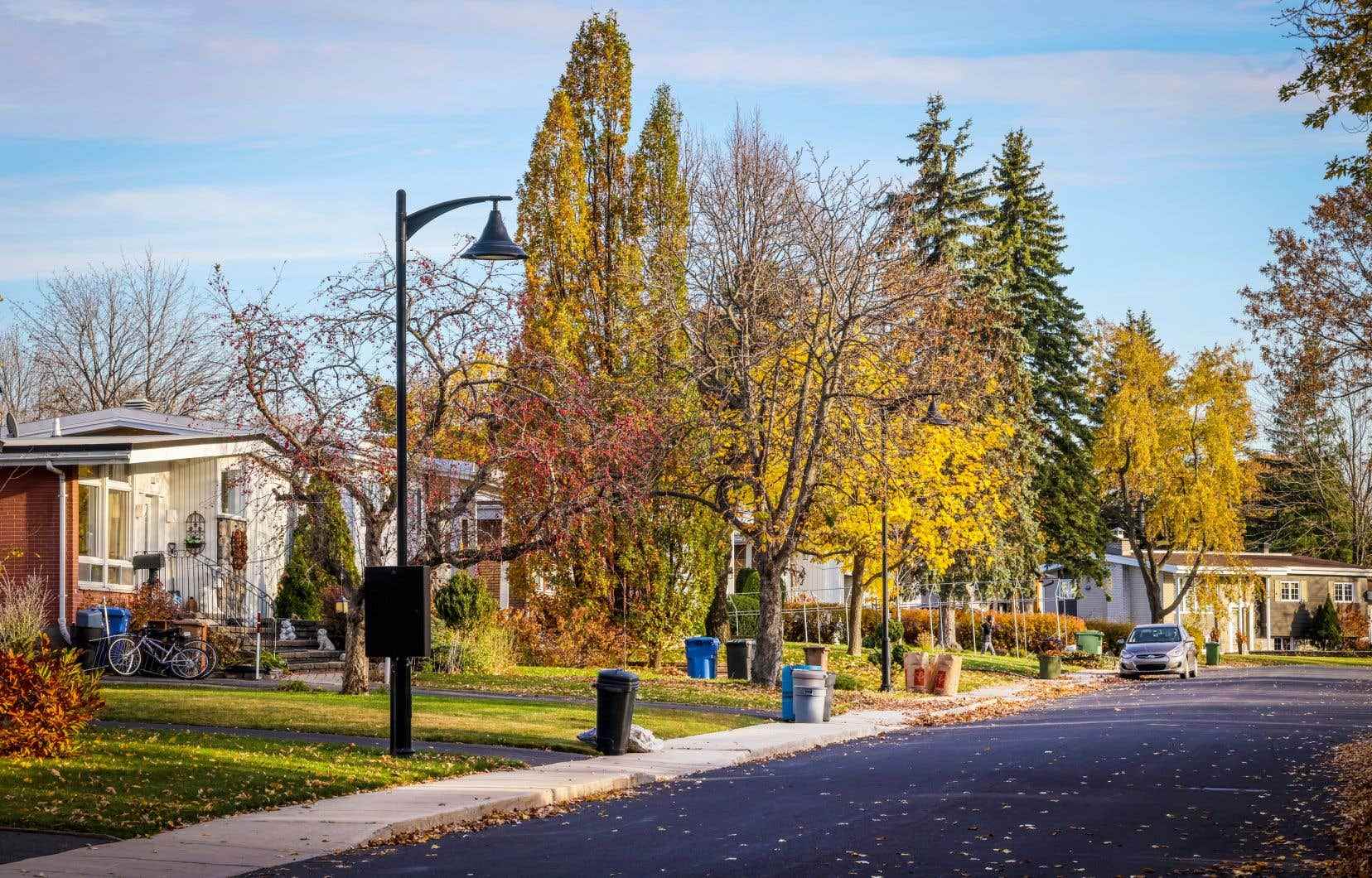In the immediate post-war period, the bungalow planted in the middle of the lawn will constitute the kingdom of the suburbanite. In the North American psyche, it represented at that time a small Versailles of family life in which many citizens hoped to be able to enjoy their own garden. Associated with conformism and a certain architectural banality, does the bungalow have heritage value? In the era of the fight against urban sprawl, several voices are raised to plead in favor of its protection.
“In North America and Canada, the bungalow is an emblem of identity. It is perhaps even more so in Quebec,” believes Lucie K. Morisset, professor and holder of the Canada Research Chair in Urban Heritage who took part, last Wednesday, in a panel discussion organized by Héritage Montréal and the McCord-Stewart. At the heart of the debate: the future of the bungalow in the context of climate change and densification.
More than a symbol, the bungalow has enabled millions of families in North America to break free from city life and find happiness in a home surrounded by lawns. Thus was born the middle class as we know it today, underlines Mme Morisset.
In general, the classic bungalow has only one floor. It could be built quickly and at reasonable cost. It was also the source of intense rivalry between municipalities wishing to attract families. These will even take care of the construction of sewers and aqueducts to woo their future residents, says the professor. “These bungalows are ideal homes for Quebecers of the Quiet Revolution. They thrive there. From there to calling them Quebec houses, there is only one step,” says Lucie K. Morisset.
Historical value
Do suburban bungalows have heritage value? In the mind of Lise Walczak, doctoral student in planning at the University of Montreal, there is no doubt. She also made it the subject of her thesis. “We don’t often associate the notion of heritage with the suburbs. This is not self-evident because bungalow neighborhoods are criticized for their pattern and are associated with urban sprawl, car use and consumption, she admits. But it remains coveted sectors. »
According to her, the bungalow has a heritage interest that comes in several parts. On the one hand, it relies on the landscape value in which it evolves, drawing inspiration, in some cases, from the model of garden cities, with winding streets and mature trees.
The notion of heritage is not often associated with the suburbs. This is not self-evident because bungalow neighborhoods are criticized for their pattern and are associated with urban sprawl
Lise Walczak cites the case of the Norvick sector, in the borough of Saint-Laurent, a neighborhood built by Wartime Housing Limited during the Second World War to house workers in military equipment factories. “This is an area that has been the subject of a statement of heritage interest to preserve this landscape character,” she recalls. It has significant historical value through its association with Wartime Housing. »
Some bungalows also have an overall value since they present a homogeneity on the scale of a district. “They form a kind of coherent whole,” says the researcher, who mentions the Riverside sector, in the borough of LaSalle, and that of rue des Îles-Percées, in Boucherville. “Strolling through it feels like time travel and going back to the 1960s.”
The bungalows also have an important cultural symbolism. They have been featured in theatre, in Neighborsby Louis Saïa and Claude Meunier, or at the cinema, in two golden women, by Claude Fournier. “In the post-war period, the suburbs represented an art of living, with a house, a garden and the car, underlines Mme Walczak. It is the democratization of the suburbs for all. »
Several cities have undertaken to document buildings of interest. Laval, for example, has identified more than 520 modern heritage buildings and around fifteen sectors of modest heritage that will be protected, explains Nathalie Martin, deputy director at the City of Laval. In Boucherville, the Société du patrimoine de Boucherville has been active for years in the preservation of the bungalows. In Longueuil, the municipal administration had to come to the aid of bungalows that were victims of a wave of demolitions.
In the age of climate change
But who says bungalow says low density and urban sprawl where the car is queen. The model seems incompatible with concerns related to the climate emergency.
Densifying the suburb by adding housing units on the land or dividing the residence into several dwellings is a strategy that some cities are examining. Lise Walczak believes that such densification is possible, provided that it respects the characteristics of the existing built environment.
But making the suburbs denser will not be easy, warns Gérard Beaudet, full professor at the Faculty of Planning at the University of Montreal. “We’re going to have a very unpleasant surprise if we think we’re going to be able to densify the suburbs,” he said. The people of Saint-Bruno, Saint-Lambert and Boucherville have already started to tell us: “No way!”
And according to him, the dependence of the suburbs on the car is not about to die out. “The suburbs are a paradoxical environment. Even with densification, there is no drop in car use in the metropolitan area. People live in condos, but have as many cars as before and they use them as much,” he explains.
Yet many commuters want a friendlier environment. “More and more, citizens are demanding local services within walking distance,” says Nathalie Martin, from Ville de Laval. “They want neighborhood libraries, parks, cafes and bakeries. »
This made the panelists who took part in the discussion last Wednesday say that the suburbs are indeed of their time and that they too are seeking to apply the concept of the “15-minute city”. Except that in his case, we should perhaps speak of a city of 15 minutes… by car.
With Jean-Francois Nadeau
